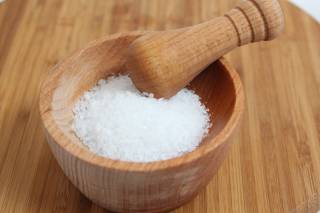Salt has been under attack in recent years with claims that is causes high blood pressure, heart disease, and stroke. Almost everything that you read promotes low sodium diet with a decrease in salt consumption.
Does salt live up to these undesirable claims or could it actually have properties that promote health and well being?
To preface the importance and roles of salt in the body, let’s begin by looking at the history of salt. Consumption of salt can be traced back to the advancement of people from a hunter-gatherer lifestyle to the beginning of agriculture as people began to use salt to make food taste good and preserve dairy and meat. Salt has also been recognized as causing an increase in the production of glial cells in the brain, which are responsible for giving us the ability to think creatively and engage in long term planning. Salt was revered as a gift from God. Plato referred to salt as “especially dear to the gods” while Homer called it a “divine substance.” In the Celtic language, the word for salt meant “sacred” and Roman soldiers were often paid partially in salt, which is why our word for “salary” is derived from the Latin word “Salarium” or salt. Furthermore, salt had a crucial impact on trade routes as well as many social and political implications. (From Sally Fallon’s article)
Clearly, the impact of salt through the ages has been staggering. So, why in the last 50 years has there been a push to ban the substance?
Unfortunately, most research done on salt, has been done with the very refined and processed table salt we find on most kitchen tables these days. Modern table salt has been chemically treated and exposed to very high temperatures which remove any valuable minerals that salt contained. Refiners then add several additives to the dry salt, often including aluminum compounds (which have been connected with Alzheimer’s disease). In order to add back the natural iodine that was removed, potassium iodide is added in potentially dangerously high amounts. In order to stabilize the iodide compound, processors add dextrose, which changes the color of the salt to purple. In order to restore whiteness to the salt, a bleaching agent is added. (Nourishing Traditions 48). When the final product has been chemically and heat treated, it loses the integrity of the sun-dried sea salt that has been highly regarded for generations. If fact, when salt water fish are placed in water with table salt, they die (http://wellnessmama.com/3745/is-salt-healthy/).
Clearly, the growing evidence that salt should be avoided is absolutely true when talking about processed table salt. However, there is a huge need in the body for unrefined, pure sea salt.
From MD Dr. Batmanghelidj’s book, “Your Body’s Many Cries for Water,” he includes all of the following as critical roles of sea salt in the body:
- Water, salt and potassium together regulate the water content of the body
- Salt is a natural antihistamine
- Salt is a natural “anti-stress” agent for the body
- Salt is essential for preserving the serotonin and melatonin levels in the brain
- Salt is critical for maintaining muscle tone and strength
- Salt is effective in stabilizing irregular heartbeats and contrary to the belief that salt causes high blood pressure, it is actually essential to the regulation of blood pressure
- Salt is vital for sleep regulation and is a natural hypnotic
- Salt is a necessary component in the treatment of diabetes and helps in the regulation of blood sugar
- Salt is crucial to the communication and information processing nerves cells from conception to death
- Salt is vital for the absorption of food particles through the intestinal tract
- Salt helps clear the lungs of mucus plugs and sticky phlegm
- Salt is essential for the prevention of muscle cramps
- Salt is vital to making the structure of bones firm and can be helpful in those with osteoporosis
- Salt helps maintain sexuality and libido
- Sea salt contains about 80 mineral elements that the body needs!
Dr. Batmanghelidj, MD recommends a half teaspoon of salt per every 10 cups consumed in order to get an adequate balance and 1.5 -3.5 teaspoons per day total with more active people on the higher end.
What kind of salt should I eat?
The short answer is, REAL salt. Look for unrefined, sea salt that is full of trace minerals and is not pure white but its natural color. Depending on where the salt is harvested from, it will contain different levels and kinds of minerals. Because of this, it is a good idea to try different kinds of sea salts to get the different benefits that each provides. Some common types of real salts include: Celtic sea salt, Himalayan salt, or black lava salt. My personal favorite is this Celtic sea salt.
It is a good thing that the body was given taste buds specifically meant to taste and enjoy salt. This was not a practical joke by the body but actually to ensure that we would eat our food with salt.


